Blog 3 is about my learning adventures and experiments to select an appropriate light source and excitation for optical "eye beam" interruption detection for the Hamper Helper.
Please Reference Blog 1 for background info The WRONGCO Hamper Helper - experiment 1 dirty clothes pile height detection - not so good
And Blog 2 The WRONGCO Hamper Helper–blog 2-Intro to Optical sensors from a Dummy
A 5MM Photo Transistor Phototransistor PT334-6C is selected as the clothes height detection photo receiver sensor.
Collector is the short leg/flat side. Max Ic = 20mA, rated Ic=3.5mA. Use a 1.5k resistor from 5v to collector.
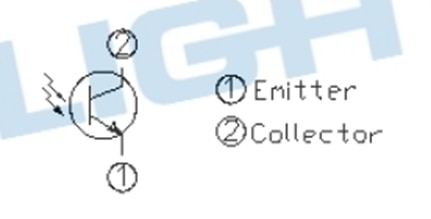
The light source selected is a modified $1.79 USD COB LED flashlight
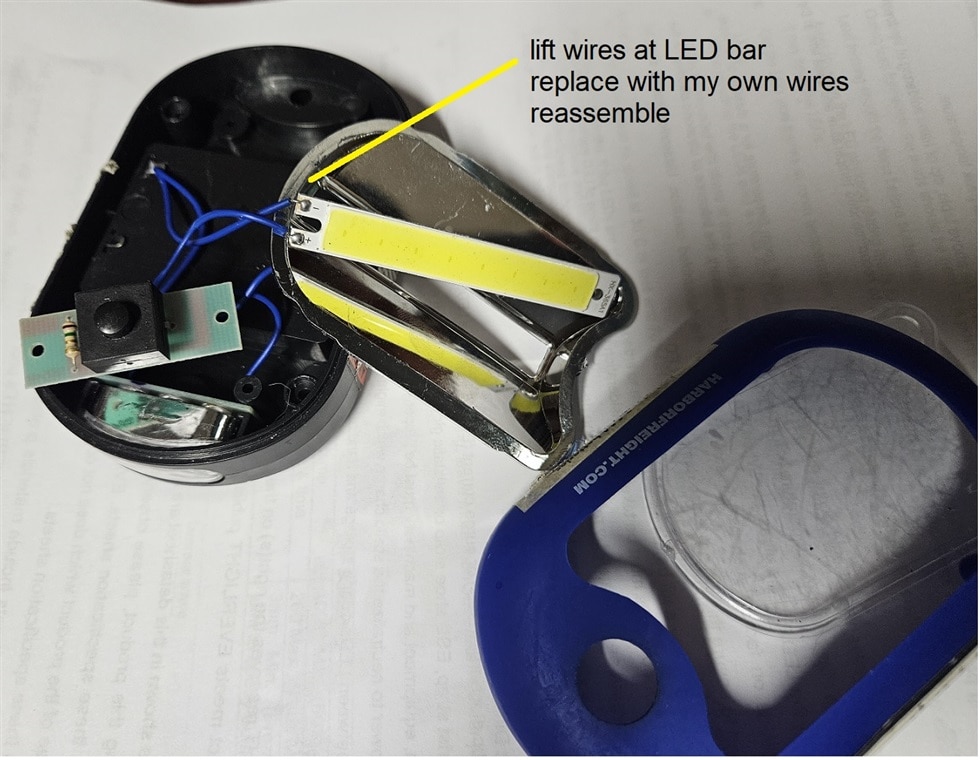
The COB LED bar does not totally behave like an LED. See attached table of Volts and amps applied to the COB LED bar
|
COB LED Volts applied |
Measured COB LED mA |
COB LED calc’d watts |
|
2.3 |
0 |
|
|
2.4 |
0 |
|
|
2.5 |
1 |
|
|
2.6 |
12 |
|
|
2.7 |
39 |
|
|
2.8 |
76 |
|
|
2.9 |
118 |
|
|
3 |
173 |
.6 |
|
3.1 |
229 |
|
|
3.2 |
305 |
Nominal ? |
|
3.3 |
393 |
|
|
3.4 |
481 |
|
|
3.5 |
600 |
|
|
3.6 |
700 |
|
|
3.7 |
740 |
|
|
3.8 |
840 |
|
|
3.9 |
1000 |
Getting toasty |
|
4 |
1100 |
4.4 |
SETUP an experiment to read the phototransistor collector to emitter voltage drop at different COB LED voltages, at actual distances between the phototransistor and light source the project will experience.
First built the phototransistor assembly with a protective shield around it
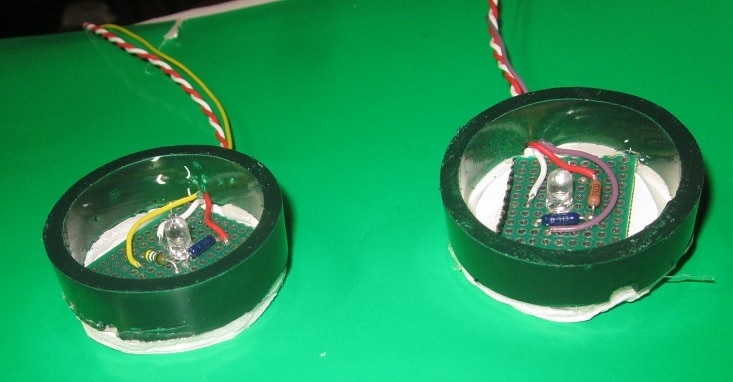
The TEST HAMPER width distance is 15 inches.
|
COB LED Volts applied |
Measured COB LED mA |
Voltage drop across the phototransistor emitter to collector (5v VCC) |
|
3 |
229 |
4.5 |
|
3.2 |
373 |
4.3 |
|
3.4 |
474 |
4.1 |
|
3.6 |
590 |
4 |
|
3.9 |
914 |
3.6 |
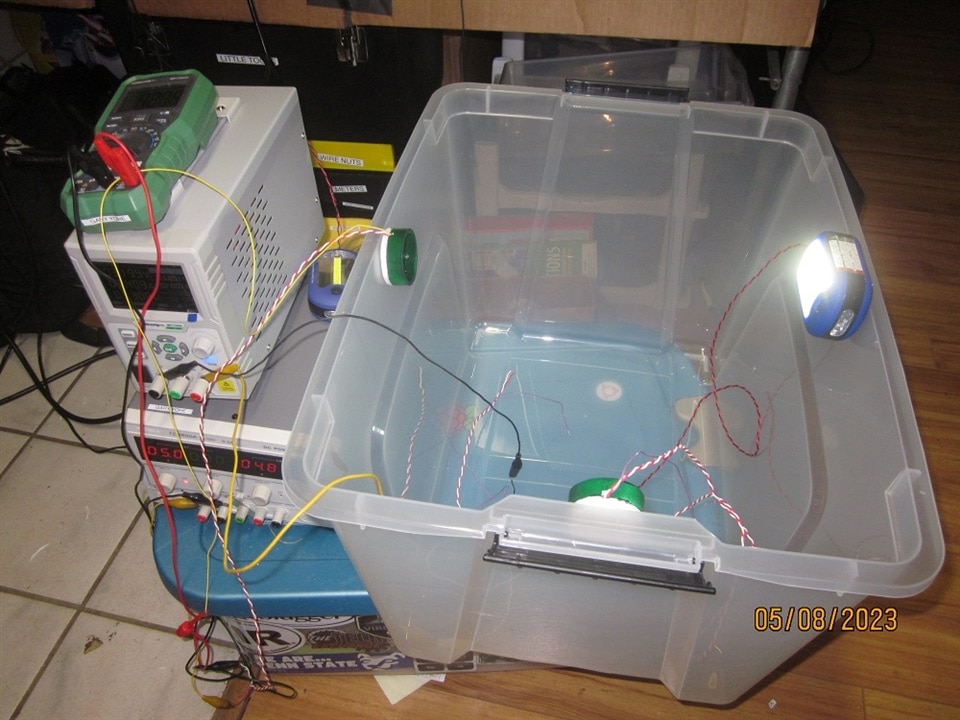
It sure is handy to have all these MultiComp DVMs and power supplies.
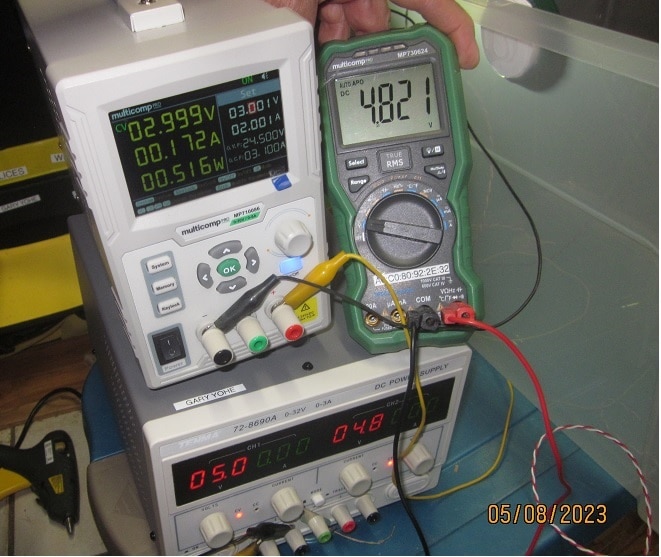
The length distance is 19 inches.
|
COB LED Volts applied |
Measured COB LED mA |
Voltage drop across the phototransistor emitter to collector (5v VCC) |
|
3 |
152 |
4.84 |
|
3.2 |
287 |
4.7 |
|
3.4 |
415 |
4.6 |
|
3.6 |
590 |
4.47 |
|
3.9 |
870 |
4.3 |
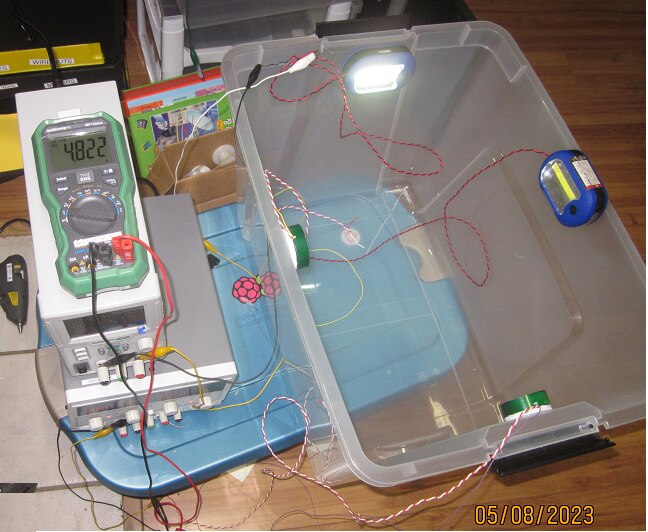
The conclusion seems to indicate the COB LED should use a 1 ohm current limit resistor if 5V is applied to the COB LED……………….BUT NOT SO FAST MY FRIENDS……
The next step of the design will use MOSFETs to switch on the COB LED bars.
This experiment measures the MOSFET voltage drop while it is turned on with the COB LED wired in series, at various currents.
|
. MOSFET collector to emitter voltage drop |
Measured mA COB LED in series with MOSFET |
|
.377 |
9 |
|
.46 |
32 |
|
.5 |
80 |
|
.46 |
150 |
|
.45 |
280 |
|
.43 |
440 |
|
.426 |
590 |
|
.423 |
780 |
|
.428 |
1000 |
My homemade IRD540 MOSFET modules, excellent as 1 quadrant motor controllers and hi load LED switches
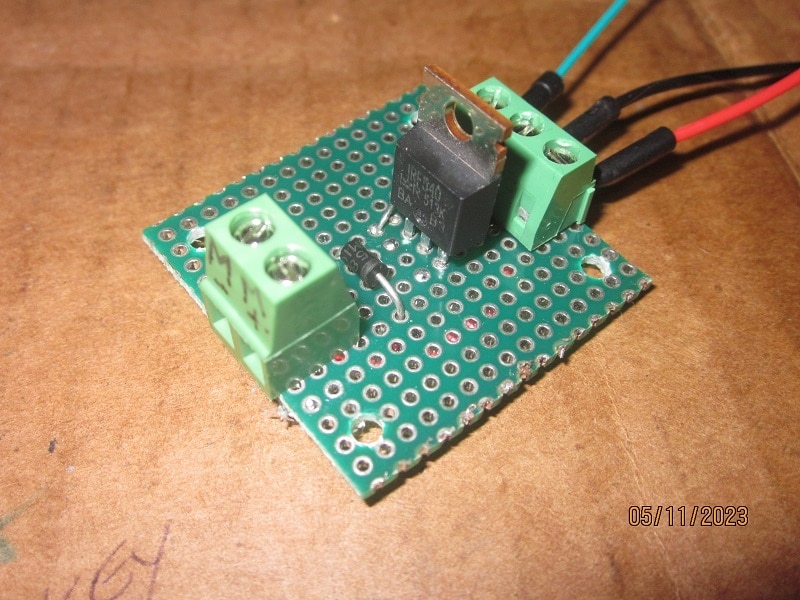
This data infers the MOSFET has a fairly flat .5V drop when turned on.
A ½ ohm series resistor could be used to limit current at 5V. Rather than use a ½ ohm series resistor, the COB LED circuit will use a BUCK power supply to feed the COB LED + MOSFET about 4.6 Volts to drive the photo eye lights.
COB LEDs are pretty handy too.
NOW onto the Arduino controls !!!!!!!
